Multi-lens analysis in Qualz.ai is designed for interview-based research. Once your interview sessions are completed, whether conducted with human or AI participants, you can apply multiple analytical lenses to unlock layered, actionable insights.
Step 1: Complete Your Interview and Transcription
Before running any analysis, ensure your interview session is complete and transcribed. You can:
- Use AI-Moderated Interviews to automatically generate transcripts.
- Upload your own transcripts from manual interviews (supports DOCX, PDF, TXT, etc.).
Step 2: Open the “Run Analysis” Tab
Once your interview transcript is ready:
- Click on the “Run Analysis” tab in the top menu.
- Choose the lens or lenses you’d like to apply.
Each lens generates a separate analysis record that you can later view under Your Analyses.
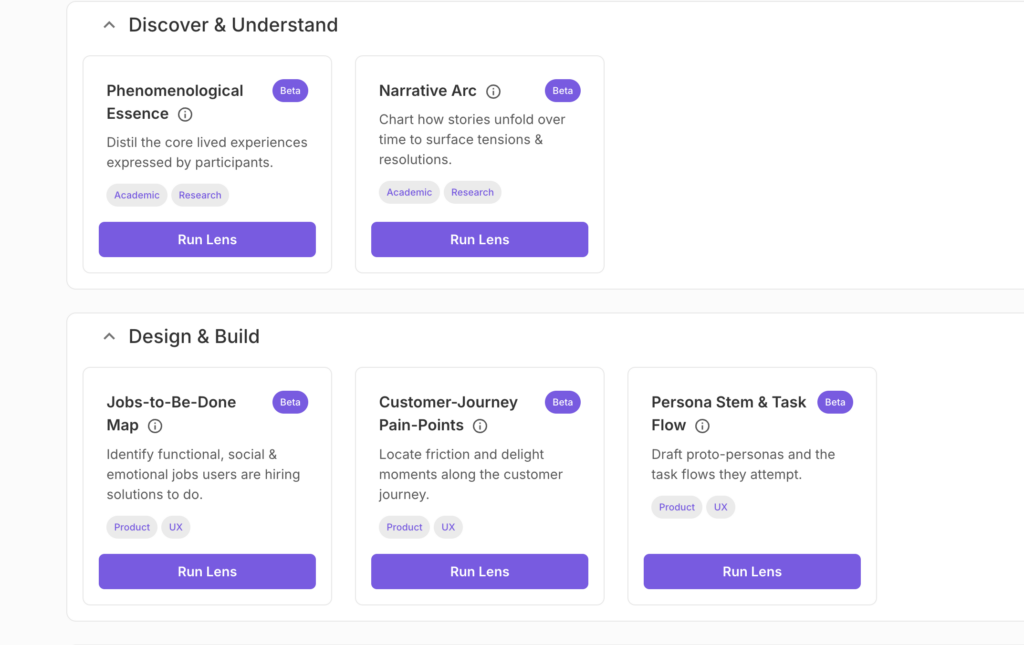
Step 3: Select a Lens and Your Interview Transcript
You can choose from multiple lens types, such as:
- Jobs-To-Be-Done (JTBD) Map
- Thematic Analysis (Grounded Emergence)
- Phenomenological Essence
- Sentiment & Emotion Spectrum
- Narrative Arc
After selecting your lens:
- Check the box for the interview transcript(s) you wish to analyze.
- Click Submit to run the analysis.
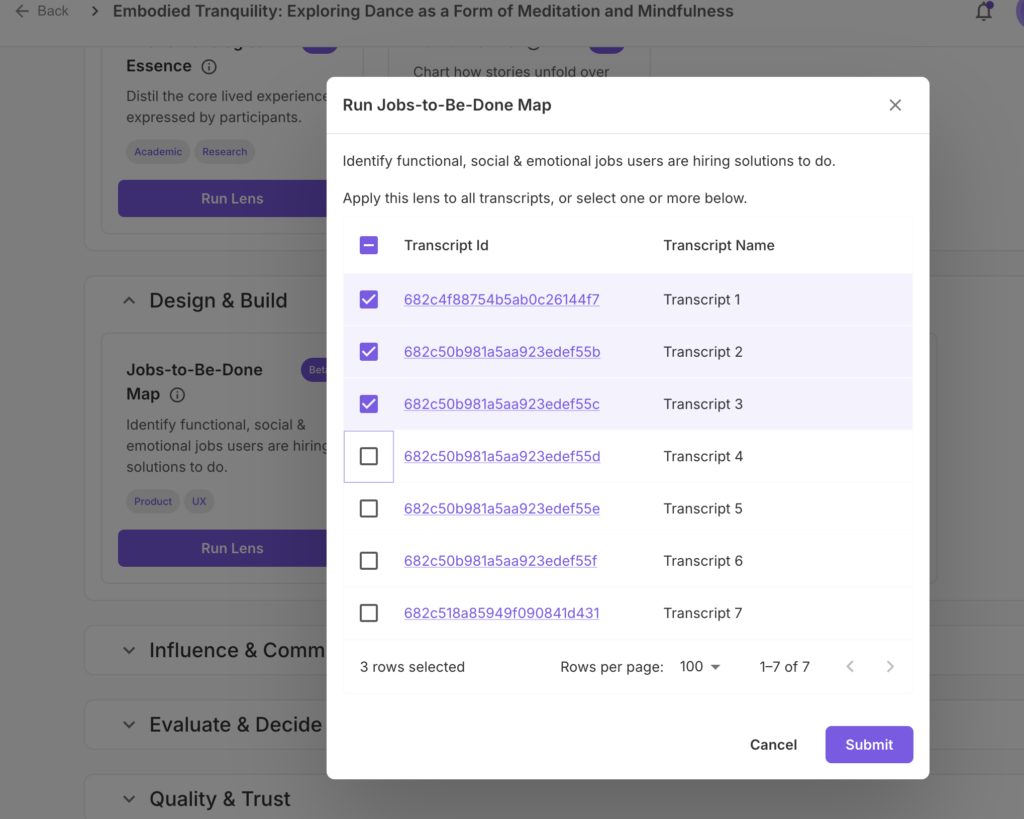
Step 4: View the Results in “Your Analyses”
Go to the “Your Analyses” tab to view your completed analysis.
If you select the Jobs-To-Be-Done (JTBD) Map Analysis, here’s what to expect:
JTBD Overall Summary
The JTBD lens synthesizes both functional and emotional jobs described in the interview. It identifies the participant’s goals, motivators, and pain points.
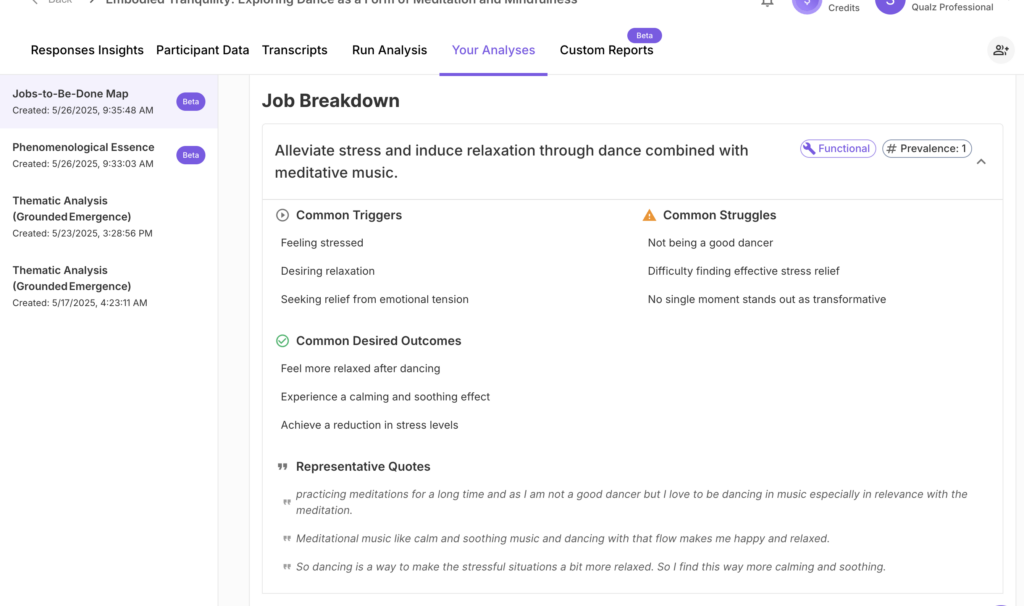
Priority Insights
Automatically generated insights based on your transcript may include:
- Equal importance is placed on emotional uplift and stress relief
- Struggles with dance proficiency do not inhibit engagement
- Flexible methods are preferred over structured routines
- Emotional triggers initiate use (e.g., stress, need for relaxation)
- Inclusive design and self-guided exploration are valued
- Synergy of music and movement enhances the experience
- Emotional benefits persist even when functional change is subtle

Grounded Theory Emergence (Thematic Analysis)
If you select Grounded Theory Emergence from the lens menu and click Submit with your chosen transcript(s).
What You’ll See in Results:
Codebook Tab
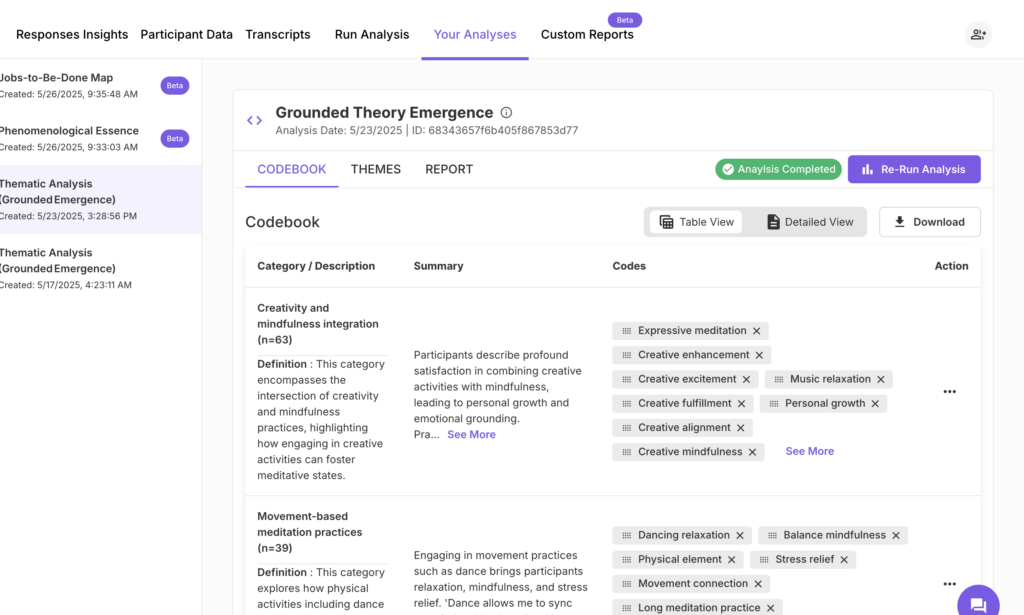
- Automated code generation with categories like:
- Creativity and Mindfulness Integration
- Movement-Based Meditation Practices
- Each category includes definitions, summaries, and grouped codes such as: “Expressive meditation,” “Creative enhancement,” “Balance mindfulness,” etc.
Themes Tab
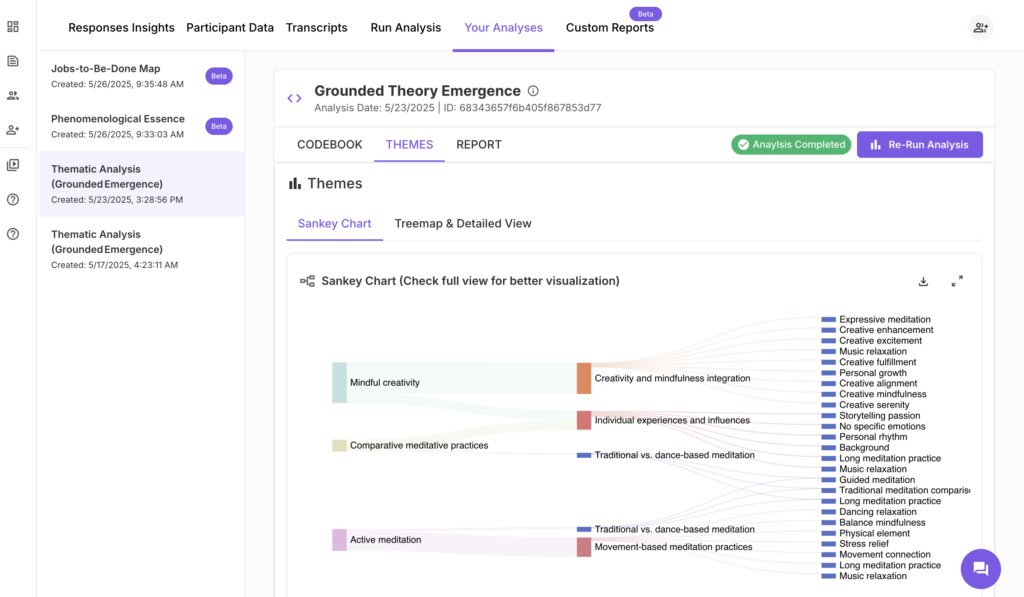
- Explore data with Sankey Charts and Treemap Views for better theme visualization.
- See how raw codes contribute to broader categories like:
- Mindful Creativity
- Comparative Meditative Practices
Report Tab
- A structured output including, : Executive Summary, Introduction,Study Objectives and more
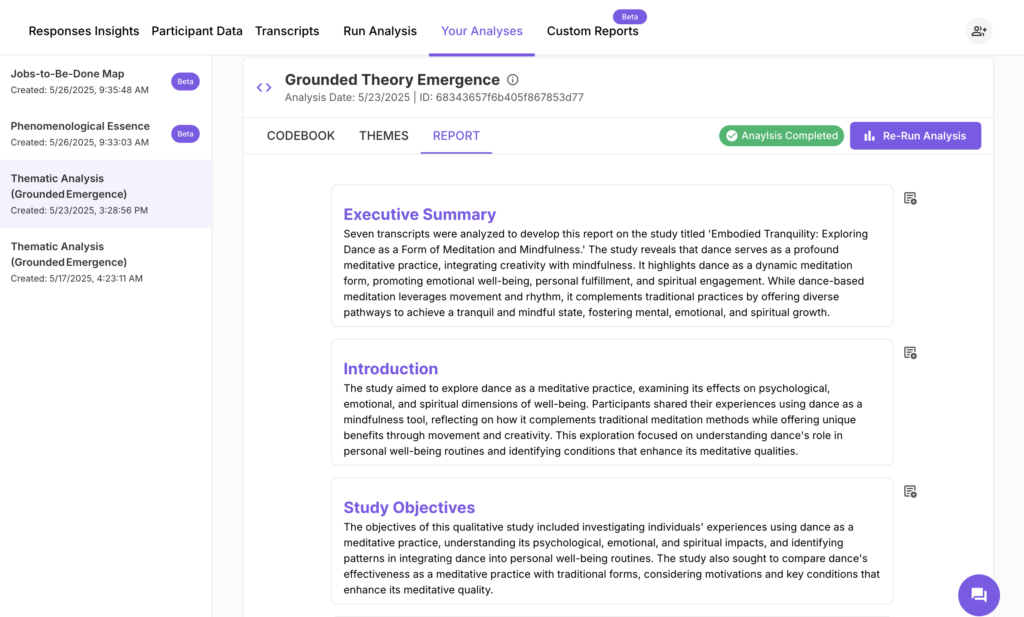
Transform your interviews into strategic insight.
If you’re ready to move beyond surface-level summaries and into layered and multi-lens actionable understanding, schedule a demo today!



